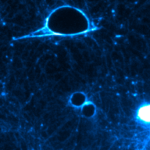Link to Pubmed [PMID] – 30641949
Toxins (Basel) 2019 01;11(1)
Botulinum neurotoxins (BoNTs) are the most lethal toxins among all bacterial, animal, plant and chemical poisonous compounds. Although a great effort has been made to understand their mode of action, some questions are still open. Why, and for what benefit, have environmental bacteria that accidentally interact with their host engineered so diverse and so specific toxins targeting one of the most specialized physiological processes, the neuroexocytosis of higher organisms? The extreme potency of BoNT does not result from only one hyperactive step, but in contrast to other potent lethal toxins, from multi-step activity. The cumulative effects of the different steps, each having a limited effect, make BoNTs the most potent lethal toxins. This is a unique mode of evolution of a toxic compound, the high potency of which results from multiple steps driven by unknown selection pressure, targeting one of the most critical physiological process of higher organisms.

